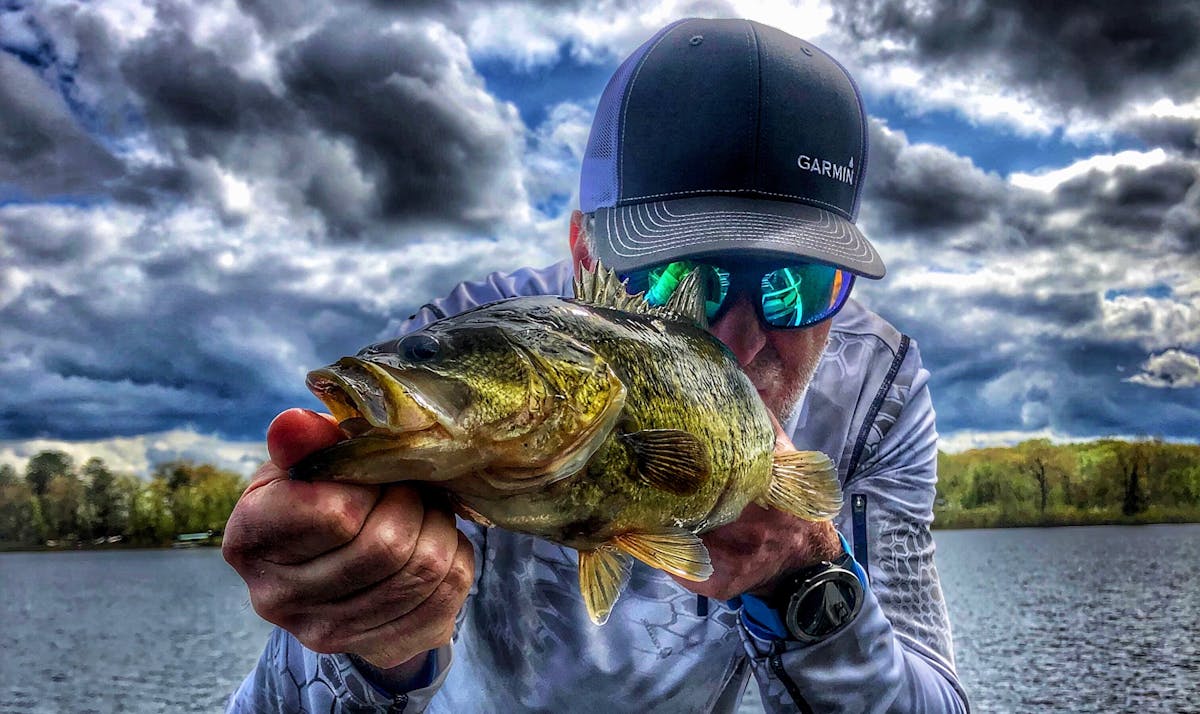This article is the second installment of a 2-part series on building patterns using Garmin LiveScope by Hall of Fame Angler Steve Pennaz.
Read Part 1 HERE.
Pattern Building
The key to building patterns is taking all available information and using it to make decisions that ultimately make your presentation something that triggers strikes. Usually, building a pattern requires you to make several small decisions, like selecting the right lure or bait, fishing at a speed the fish like, etc., until you come up with a combination that works.
Up until now, anglers have relied on simple time on the water and trial and error to make decisions. If you aren’t catching fish you move or begin the process of looking for a better bait or presentation since there was no easy way to watch the fish respond beyond fishing vertically to fish directly beneath the boat.
But the problem with using 2D sonar to do that is its limited bottom coverage. A unit with a 20-degree transducer covers only 7.1 feet of the bottom in 20 feet of water. With Garmin LiveScope in Forward, I can easily scan hundreds of feet of water, including the bottom, in seconds.
The advantages offered are exponential. Besides finding fish quickly and without running over them with the boat, we can determine their exact position, the direct they may be moving, even their attitude.
Before LiveScope, I never realized how active fish are. I always assumed that a fish would be in the spot I marked it and to find it again I would simply have to turn the boat around and run over it.
With LiveScope, I also learned there are two different types of presentation rejections…fish that approached the bait (also seen by 2D sonar) and those that never bothered to even approach the bait in the first place (not seen by traditional sonar).
LiveScope made me realize the key to catching a lot more fish is not just learning how to trigger the fish that approach my bait, but to elicit positive reactions from those that never approach the bait.
With LiveScope, I’ve also seen how fish react to different lures, jig strokes, lines, and many other factors. In many cases, it’s not just the rejection that was striking, but how the fish rejected me because it gave me valuable clues whether I needed to speed up or slow down, and more.
Rigging LiveScope
Most anglers I know that are running LiveScope for bass are rigging the transducer on their trolling motor shaft and using the motor itself in the scanning process.
This works very well for locating targets like brush piles and rock piles, but there are some disadvantages. For one, you have to give up boat control to stay on located fish (or vice versa).
Also, with LiveScope’s narrow beam (side-to-side) transducer, it can be tough to keep the fish and your bait on screen when fishing vertically.
Many anglers, especially those who target species like crappie, catfish and walleye, are turning to side mounting systems for LiveScope. Companies like Fishing Specialties and others are building easy mounts that allow anglers to run their LiveScope (or original Panoptix) independent to the trolling motor.
These systems are a bit clunky, but allow you to scan massive amounts of water while still enjoying total boat control. And when you locate fish, you can track them easily, allowing you to make multiple casts to them in many cases.
Until you try this, you’ll never truly understand how exciting it is.
Where from Here?
LiveScope has been on the market for just over a year and a half as I write this, so it has one full open water season and one ice season under its belt so far. Already, anglers are applying this tech to their specific types of fishing, which is leading to breakthroughs in fishing applications. We’ll keep you up on the breakthrough as they happen.
